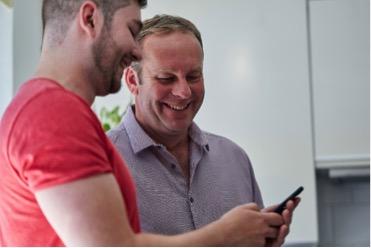In recent years, the development of smart phones that are continuously connected to the internet has revolutionised virtually every aspect of our lives. We are now starting to see this technology being used to improve patient health care as well; including how patients document their symptoms and feed back to clinicians. Although improved communication between patient and doctor should have obvious benefits, limited research has been done to demonstrate a positive impact on patient outcome.
However, a recent study published in the Journal of Clinical Oncology may be about to change all that.
What has been done?
The study looked at how 766 patients reported their symptoms during routine chemotherapy treatment for advanced solid tumours. The patients were placed into two groups, the first used an electronic device to report changes to their nurse straight way. This group was called the electronic Patient-Reported Outcomes (PRO) group. Interestingly, in nearly 4 out of 5 cases, the problem reported by the patient could be resolved by the nurse simply discussing how to manage their symptoms with them. The second group of patients followed a more ‘standard’ approach where they reported symptoms during routine visits or appointments they had booked themselves. To assess the benefits of both systems the patients were asked to complete a questionnaire that measured their health related quality of life (HRQL) score when they started the study and then again 6 months later.
What did they find out?
More patients reported an increase in their HQRL score and fewer patients a decreased score in the PRO group compared to the standard one. The patients using electronic devices also visited A&E less, were not hospitalised as often and ultimately had an increased chance of surviving for longer. The exact reason for this benefit remains unclear but using the electronic reporting system probably allowed new symptoms to be treated more quickly - before developing into something more serious.
What does this mean for stem cell transplant patients?
Although this study looked at patients with solid tumours rather than those that have undergone a stem cell transplant, it’s likely that they would see similar benefits. We know that patients respond far better to treatment for GvHD if it’s recognised early and treatment is given quickly. This is why your transplant team emphasise the importance of reporting any new symptoms as soon as possible.
In a time when NHS funding is a subject of great political debate it’s heart warming to see that simply improving communication between patients and the clinic can help patients to live longer. At Anthony Nolan we have developed the My Transplant Tracker phone app that allows patients to self manage their recovery. You can record your hospital appointments, medications, blood cell counts and symptoms as well as monitor your diet, fluid intake and physical activity. You can then share this information with your transplant team to help them support you in the best possible way.
You can download My Transplant Tracker from the Apple or Android app stores – Just search for ‘Anthony Nolan’ or ‘Transplant Tracker’

